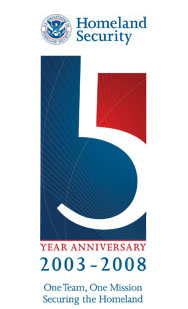
| Home | Information Sharing & Analysis | Prevention & Protection | Preparedness & Response | Research | Commerce & Trade | Travel Security & Procedures | Immigration |
| About the Department | Open for Business | Press Room |

The threat level in the airline sector is High or Orange. Read more.

This web page contains the Department of Homeland Security procedures to implement the National Environmental Policy Act and supporting information. The National Environmental Policy Act (NEPA) directs federal agencies to analyze, disclose, and consider the potential for impacts to the quality of the human environment in the planning and development of its proposed actions.
NEPA established the President’s Council on Environmental Quality (CEQ), whose regulations establish general procedures for NEPA compliance that apply to all federal agencies. CEQ’s regulations require individual federal agencies to establish more specific procedures for their particular mission activities. The Department published its draft procedures for public comment during the summer of 2004.
The Homeland Security procedures, Management Directive 5100.1, Environmental Planning Program establish a framework for the balanced and systematic consideration of environmental stewardship in the planning and execution of the Department’s missions: to lead the unified national effort to secure America; to prevent and deter terrorist attacks; and to protect against and respond to threats and hazards to the nation. The draft procedures assign responsibilities and procedures, tailored to the Department’s needs, for performing environmental impact analyses appropriate to different types of activities in these missions.
The requirements in the Management Directive place particular emphasis on the role of the project proponent to ensure that environmental stewardship requirements are appropriately integrated into the performance of the Homeland Security mission. In particular, there are special considerations for intergovernmental coordination, public involvement, dispute resolution, handling of sensitive information, and emergency procedures in Department decision making.
The following links provide background on the development of the Management Directive and also link to supporting information that was used in its development.
This page was last reviewed/modified on April 2, 2008.